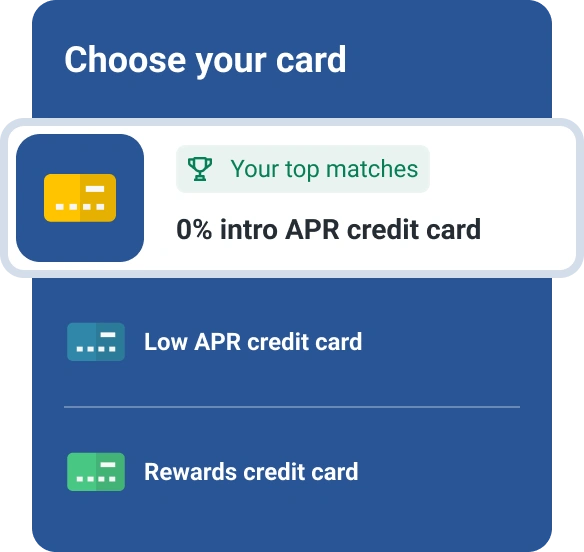What Is a Credit Card Daily Periodic Rate?
Quick Answer
A credit card’s daily periodic rate is the interest rate that applies to your daily balance to determine how much interest will accrue at the end of the day. You can calculate it by dividing the card’s interest rate by 360 or 365, depending on your card’s terms.

Your credit card's daily periodic rate is the interest rate that some credit cards use to calculate how much interest accrues at the end of every day. The daily periodic rate can apply to your card's balance every day, which means the interest can compound and increase how much you owe at the end of every billing cycle.
How Do You Calculate a Daily Periodic Rate?
You can calculate a card's daily periodic rate by finding its annual percentage rate (APR), which is the same as its interest rate. The APR will be on your card's monthly statement, or you can check it by logging into your credit card account online.
Once you have your card's APR, divide it by 360 or 365 (review your cardholder agreement to see which option your card issuer uses) to find the daily periodic rate. For example, if your card's APR is 26% and your card issuer uses a 365-day calculation, the card's daily periodic rate is 0.071%.
Knowing the daily periodic rate can help you understand and calculate how much interest accrues on a credit card balance. For instance, a card with a 0.071% daily periodic rate and a $5,000 balance will accrue $3.55 of interest (5,000 x 0.00071 = 3.55) at the end of the day.
Can You Lower a Card's Daily Periodic Rate?
Many credit cards have a variable APR, which means your rate may go down or up when interest rates change. As a result, your daily periodic rate might automatically decrease if interest rates go down. Some card issuers may also send out temporary interest rate offers, which could give you a lower (or zero) percent rate on your purchases. But you don't have any control over when these happen.
If you want to get a lower rate on your own, you could try calling your card issuer and asking if it could lower your rate. They might agree if you're a longtime customer or your income or credit has significantly improved since you first opened your card. Or, if you're asking for a lower rate because you're struggling to afford your payments, some card issuers have hardship programs that may temporarily lower your interest rate or minimum payment.
How Can You Save on Credit Card Interest?
Most credit cards offer cardholders a grace period, an interest-free period between the end of your billing cycle and your bill's due date. If you pay your statement balance in full each month, you won't pay any interest on your purchases.
However, the grace period gets rescinded when you revolve or carry a balance. Now, your revolved balance and new purchases will start to accrue interest daily based on your daily periodic rate.
When you think or know you might carry a balance and want to minimize your interest payments, you could:
- Open and use a low-interest credit card. Even if the card doesn't offer many rewards, you might save more on interest than you'd earn in rewards anyway.
- Pay down the credit card with the highest APR first. The approach is called the debt avalanche method, and it helps you minimize your overall interest payments as you pay down multiple debts.
- Look for cards with 0% APR offers. When you know you have large purchases coming up, getting a new card that offers an introductory 0% APR on purchases might make sense. You can then pay down the balance without paying extra interest during the promotional period.
- Use a balance transfer card. Another option could be to open a balance transfer credit card that offers an introductory 0% APR on balances you move to the card. While you may need to pay a balance transfer fee, you could end up saving more on interest than you pay in fees.
You also might be able to save money by taking out a debt consolidation loan to pay off credit card balances. While you'll have to pay interest on the loan, you may qualify for a lower rate than your credit card's APR. Plus, the loans often have a fixed interest rate, fixed monthly payments and a predetermined repayment period that can make repaying the loan simpler than paying off a credit card.
Check Your Credit Card Offers
The daily periodic rate doesn't matter much when you pay your bill in full and don't pay interest. When that's the case, a rewards credit card might make the most sense. But if you're carrying or think you might need to carry a balance soon, a low-interest card or a promotional interest rate could be the best choice.
No matter the type of card, your credit score can impact the decision, and you can check your credit for free with Experian. Then, use Experian's free comparison tool to compare different credit card offers and get matched with cards based on your unique credit profile.
Discover low interest credit cards
Keep more cash in your wallet with a low interest credit card. See what offers you qualify for based on your FICO® Score.
See your offersAbout the author
Louis DeNicola is freelance personal finance and credit writer who works with Fortune 500 financial services firms, FinTech startups, and non-profits to teach people about money and credit. His clients include BlueVine, Discover, LendingTree, Money Management International, U.S News and Wirecutter.
Read more from Louis

